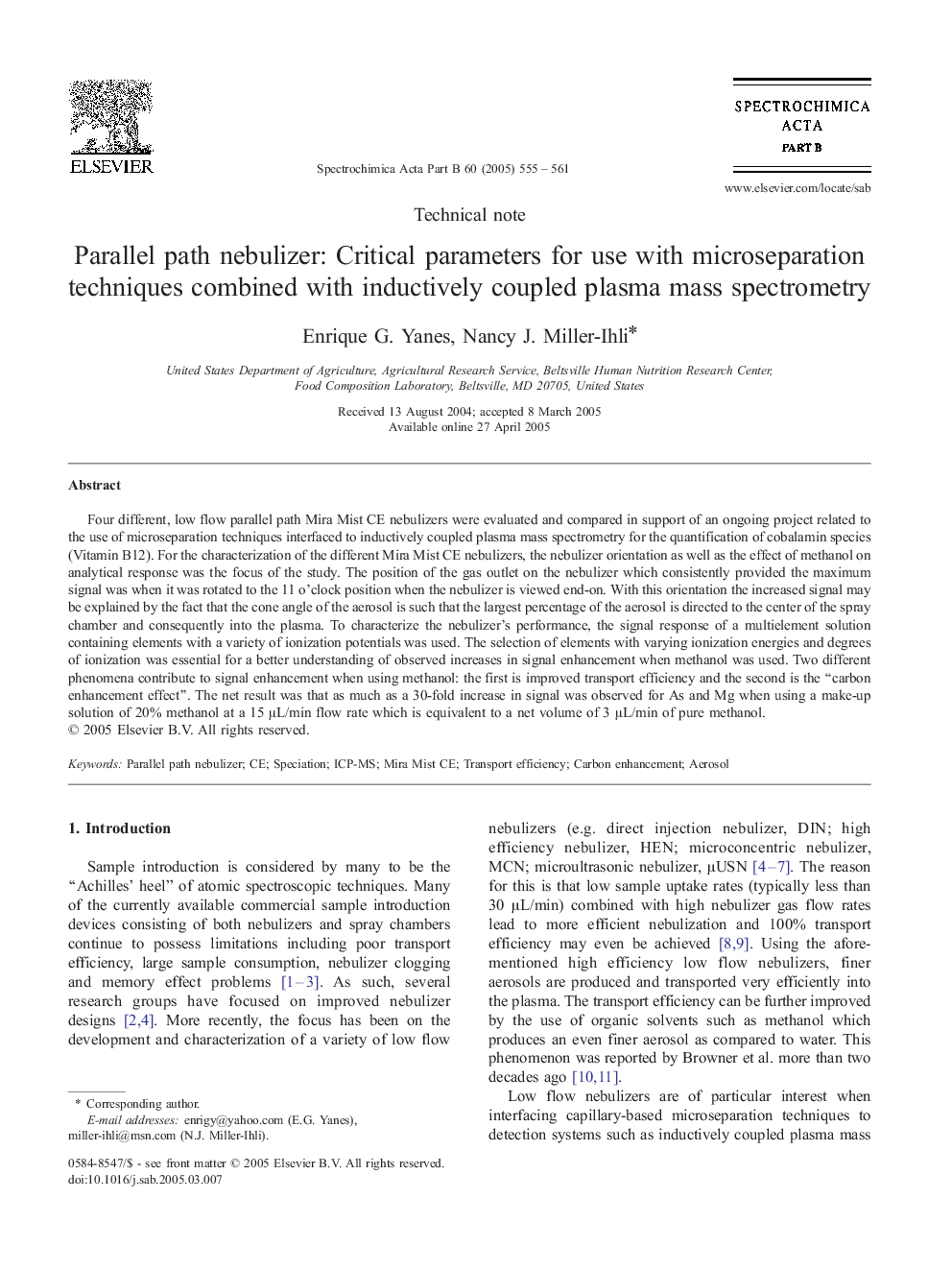| Article ID | Journal | Published Year | Pages | File Type |
|---|---|---|---|---|
| 10559050 | Spectrochimica Acta Part B: Atomic Spectroscopy | 2005 | 7 Pages |
Abstract
Four different, low flow parallel path Mira Mist CE nebulizers were evaluated and compared in support of an ongoing project related to the use of microseparation techniques interfaced to inductively coupled plasma mass spectrometry for the quantification of cobalamin species (Vitamin B12). For the characterization of the different Mira Mist CE nebulizers, the nebulizer orientation as well as the effect of methanol on analytical response was the focus of the study. The position of the gas outlet on the nebulizer which consistently provided the maximum signal was when it was rotated to the 11 o'clock position when the nebulizer is viewed end-on. With this orientation the increased signal may be explained by the fact that the cone angle of the aerosol is such that the largest percentage of the aerosol is directed to the center of the spray chamber and consequently into the plasma. To characterize the nebulizer's performance, the signal response of a multielement solution containing elements with a variety of ionization potentials was used. The selection of elements with varying ionization energies and degrees of ionization was essential for a better understanding of observed increases in signal enhancement when methanol was used. Two different phenomena contribute to signal enhancement when using methanol: the first is improved transport efficiency and the second is the “carbon enhancement effect”. The net result was that as much as a 30-fold increase in signal was observed for As and Mg when using a make-up solution of 20% methanol at a 15 μL/min flow rate which is equivalent to a net volume of 3 μL/min of pure methanol.
Related Topics
Physical Sciences and Engineering
Chemistry
Analytical Chemistry
Authors
Enrique G. Yanes, Nancy J. Miller-Ihli,
